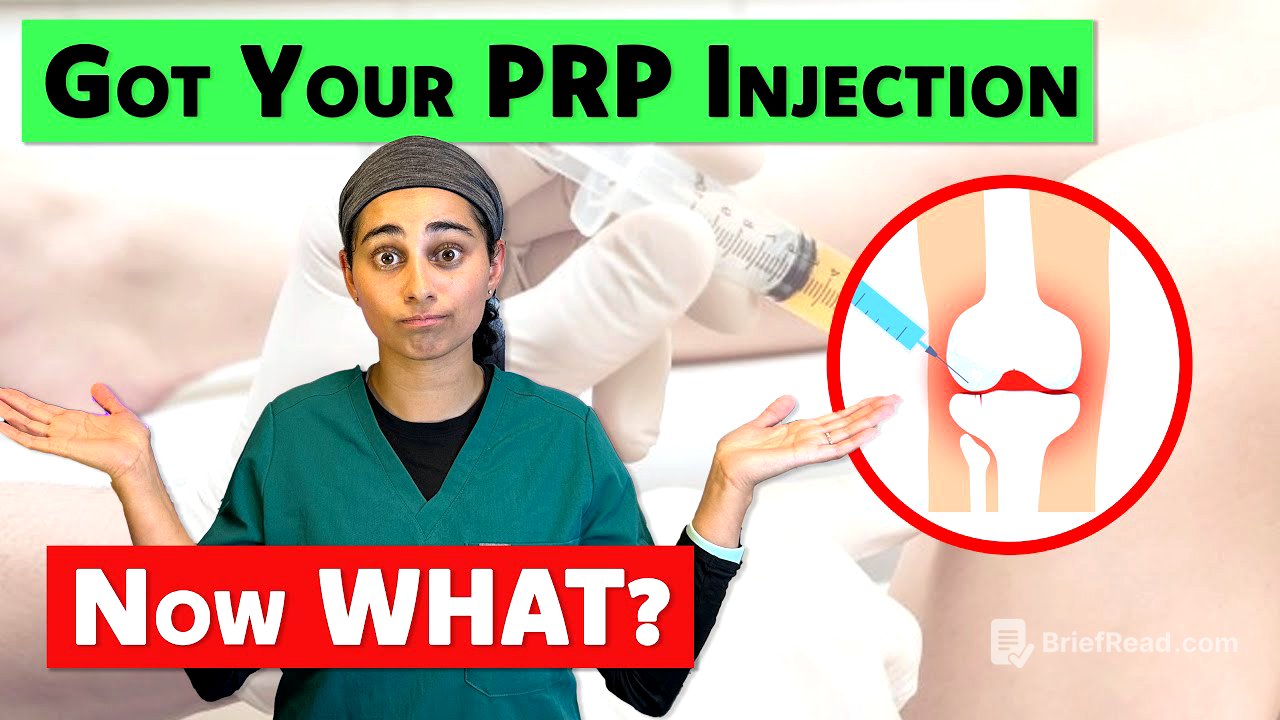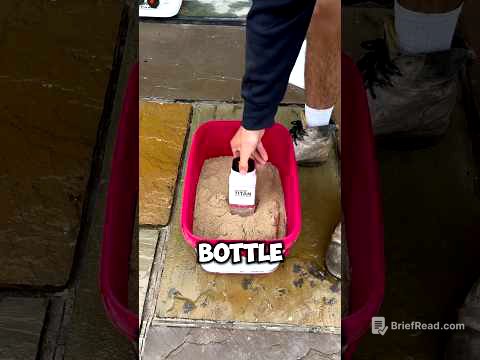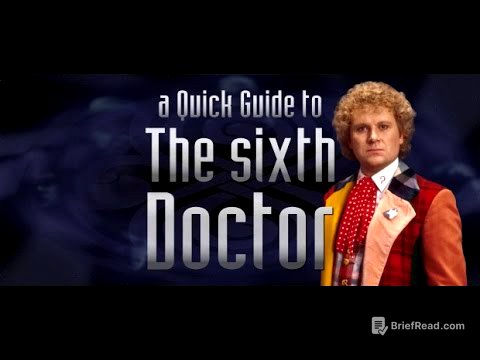TLDR;
This video provides a comprehensive guide on post-procedure instructions following a Platelet-Rich Plasma (PRP) injection. It covers essential aspects such as medication management, the use of ice and heat, activity restrictions, monitoring for infection, and what to expect in terms of recovery and the number of injections needed. The information is tailored to both joint and tendon injections, highlighting the differences in recovery protocols.
- Avoid anti-inflammatories for 1-2 weeks post-injection.
- Monitor for infection signs like fever, increased pain, swelling, and redness.
- Full benefits of PRP can take 8-12 weeks, with joints often improving faster than tendons.
Introduction [0:00]
Dr. Sonam, an Interventional Sports Medicine doctor, introduces a guide on post-procedure instructions following a Platelet-Rich Plasma (PRP) injection. She emphasizes the importance of following specific instructions after receiving a PRP injection and encourages viewers to engage with the content by liking, subscribing, and leaving comments.
What is PRP [0:34]
PRP, or Platelet-Rich Plasma, is a regenerative therapy using the patient's own blood. The process involves drawing blood, spinning it down, and injecting it back into specific areas of the body to treat conditions like osteoarthritis and tendon problems. There is no standardized post-injection protocol, so the doctor provides specific handouts to patients with pre and post injection instructions.
Medications to take/avoid [1:21]
After a PRP injection, increased pain is common. For joint injections, Tylenol usually suffices for pain lasting up to a week. Tendon injections may cause more pain for one to two weeks due to micro-trauma, potentially requiring stronger pain medication prescribed by the doctor for five to seven days. It is crucial to avoid anti-inflammatory medications like aspirin, Advil, and naproxen for one to two weeks post-injection, as they counteract PRP's inflammatory stimulation.
Ice and Heat [2:27]
Avoid heat after a PRP injection, as it can worsen swelling and pain. Ice can be used in the first few days to help mitigate pain and swelling, despite the goal of stimulating an inflammatory reaction for PRP to work effectively.
Pools, Sauna's, Hot tubs [2:44]
It's important to avoid dirty, still water like pools and lakes for 24 hours post-injection to prevent infection due to the open skin. Hot tubs and saunas should be avoided for up to one week after the injection to prevent increased pain and swelling in the treated area.
Rest and Activity (Return to sport) [3:11]
Rest and activity levels post-PRP injection vary depending on the injection site, whether it's a joint or a tendon. For joint injections, rest is recommended for 48 hours due to potential irritation, pain, and stiffness, as freezing is avoided to preserve PRP molecule activity. Gentle range of motion and walking are advised in the first week, with gradual increases in activity and strengthening exercises in weeks two and three. By week four, patients often feel quite good, though individual experiences may vary. For tendon injections, rest is crucial in the first week to avoid strenuous activity, with gentle range of motion exercises to promote blood flow. Strengthening exercises are gradually introduced in weeks two and three, with a return to normal activities around week four. Full recovery to pre-procedure levels can take six to eight weeks. Eccentric loading exercises, like lowering a dumbbell under load during a bicep curl, are important for tendon rehab as they stimulate tenocyte and stem cell formation. Consulting a physiotherapist is highly recommended to guide therapy.
Monitor for Signs of Infection [5:13]
Monitoring for signs of infection is crucial after any injection. Key symptoms include fever, increased pain, increased swelling, and increased redness at the injection site. Infections typically manifest five to seven days post-injection, requiring immediate contact with the provider if any symptoms arise.
What will my injection start working? [5:40]
The full benefits of a PRP injection can take up to 8 to 12 weeks to appear. Joint injections tend to improve faster than tendon injections, which may require the full 8 to 12 weeks to show significant benefits.
How many injections will I need? [6:03]
The number of PRP injections needed varies based on the condition and individual response. For joints, some protocols suggest one injection followed by a reassessment of symptoms after three weeks. For tendons, one or two injections may be recommended. The doctor typically allows the patient's response to guide the next steps, with one injection for joints and a reassessment to determine if another is needed.
How long does a PRP injection last? [6:40]
The duration of PRP effectiveness varies. For joints, if PRP is effective, it typically lasts about one year, necessitating yearly injections. In some cases of tendon issues, one PRP injection can be curative, particularly in conditions like tennis elbow. While not universally effective, many patients experience significant and positive responses to PRP for tendon-related problems.







![Notion Tutorial - Full Course for Beginners [2025]](https://wm-img.halpindev.com/p-briefread_c-10_b-10/urlb/aHR0cDovL2ltZy55b3V0dWJlLmNvbS92aS9rT2YzUVNCVjI5WS9ocWRlZmF1bHQuanBn.jpg)

